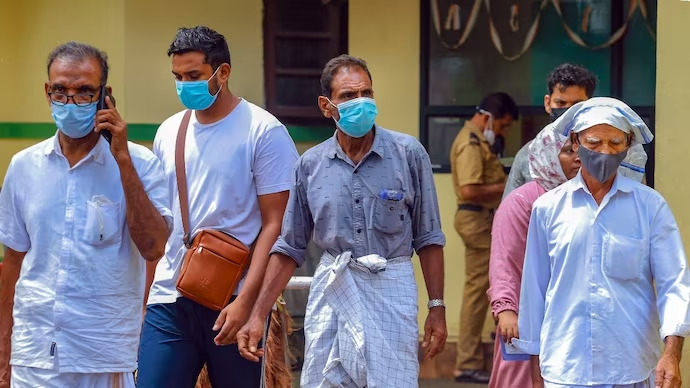How Nipah virus spreads, its symptoms and steps to prevent transmission
India has experienced five Nipah outbreaks to date, with this latest resurgence marking the fourth occurrence in the state of Kerala alone.
By Anoushka Caroline Williams
Representational Image.
Hyderabad: Kerala is currently grappling with a resurgence of the deadly Nipah virus. This viral disease, caused by the Nipah virus (NiV), has caused two deaths and six confirmed cases so far. Nipah virus has a fatality rate of approximately 75 per cent, making it a formidable threat to public health.
India has experienced five Nipah outbreaks to date, with this latest resurgence marking the fourth occurrence in the state of Kerala alone.
Nipah Virus - structure and transmission
The Nipah virus, classified as a zoonotic infection, is a member of the paramyxovirus family and belongs to the Henipa virus genus. Its genome consists of a single-stranded RNA, and the present strain detected in Kerala is the Bangladesh variant, known for its high mortality rate.
The term ‘Nipah’ traces its origins to a Malaysian village where the first outbreak was recorded in 1998-1999. During these initial outbreaks, human infections primarily resulted from direct contact with sick pigs or their infected tissues, with no evidence of human-to-human transmission.
However, subsequent outbreaks in Bangladesh and India revealed a different mode of transmission.
The consumption of fruits or fruit products contaminated with urine or saliva from infected fruit bats emerged as the likely source of infection, and in these cases, human-to-human transmission was observed.
Symptoms and diagnosis
The incubation period for Nipah virus infection ranges from 4 to 14 days, but in some cases, it has extended to a harrowing 45 days.
Early symptoms include fever, headaches, muscle pain, vomiting, and a sore throat. As the disease progresses, patients may experience dizziness, drowsiness, and altered consciousness. Severe neurological signs, encephalitis, and seizures can follow, potentially leading to a coma within 24 to 48 hours.
Diagnosis is established through clinical history and lab diagnostic methods such as real-time polymerase chain reaction (RT-PCR), enzyme-linked immunosorbent assay (ELISA), and virus isolation through cell culture techniques.
Challenges and medical response
As of now, there are no specific drugs tailored for the treatment of Nipah virus infection, with treatment primarily focusing on symptom management. Passive immunotherapeutic treatments are under development but remain compassionate measures.
Expert insights and pandemic potential
Doctors and experts emphasise that the Nipah virus warrants serious concern due to its potential to jump between species and its ability to spread from person to person, resulting in alarmingly high mortality rates.
Dr Rajesh Kumar, an epidemiologist, says, “Identification and contact tracing are pillars of epidemiology tools to nip the outbreak in the bud.” Currently, no vaccination exists for Nipah, and the virus, while not airborne, can spread through contact with infected body fluids or contaminated food.
Dr Sunita Menon, a virologist, urges preventive measures. “The risk of human-to-human transmission can be reduced through regular hand washing, avoiding sharing food or bedding with infected individuals, and wearing personal protective equipment when handling the corpses of Nipah victims.”
As Kerala confronts this alarming resurgence of the Nipah virus, it serves as a stark reminder of the importance of swift and coordinated efforts to contain and mitigate the impact of infectious diseases.
While the world’s attention remains focused on the ongoing battle against Covid-19, this re-emergence underscores the persistent threat of deadly pathogens and the need for continued vigilance in public health efforts.